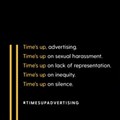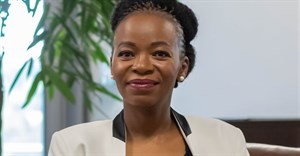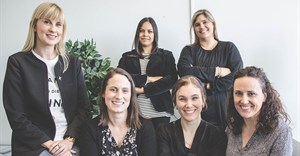Trending




 Sabre EMEA 2024 Awards: Razor PR, Retroviral top SA agenciesDanette Breitenbach
Sabre EMEA 2024 Awards: Razor PR, Retroviral top SA agenciesDanette Breitenbach
Elections 2024
Jobs
- Senior Graphic/Digital Designer Cape Town
- Business Unit Director Johannesburg
- Google Paid Media Specialist Johannesburg
- Senior Copywriter Johannesburg
- Senior Account Manager - Remote Cape Town
- Account Manager Johannesburg
- Account Executive Cape Town
- Junior Graphic Designer Germiston
- Marketing Manager Shelly Beach
- Freelance Digital Account Manager Cape Town
Just how female-friendly is the advertising industry?

Does the bias lie within a patriarchal leadership of our industry that is simply not offering the positions to women or are women opting out of those positions? It begs the question: Just how female-friendly is our industry if women aren’t taking on senior roles?
Creating a women-friendly environment
Whilst I truly do believe that there is a genuine intention to create a female-friendly industry and provide the opportunity for women to take on senior roles, I also believe that their unequal treatment is possibly so systemic and ingrained we are seldom even aware of it. Take for example the fact that some people immediately assume that if a woman has a child she’s less likely to be career-driven or that she won’t want to travel for work or attend after-hours client functions.
In an era when family duties are very often equally shared by both parents, surely this way of thinking is no longer applicable? We see a fairly even split of male vs. female staff amongst junior staff and even in mid-level, however, it appears that more and more women are choosing to leave the industry at the senior level. If it isn’t due to a perceived undercurrent of inequality, why then are so many senior women opting out of our industry?
This is not a conundrum unique to our industry - the tech industry in the U.S. was last year revealed to be particularly unfriendly to women – so how do we go about correcting the imbalances and creating a women-friendly environment?
Whilst I fully support flexible working hours and work-from-home or bring-the-kids-to-work solutions for all staff regardless of gender, we need to be going beyond flexibility. Perhaps this involves female forums in every workplace to address the needs of women in particular and then entrench these into workplace policy and processes.
How high is that glass ceiling?
An open-door policy whereby any employee can influence company processes will increase employee involvement and contribute towards the friendliness of the workplace, regardless of gender. Let’s also give thought to what type of role models abound for women in our workplace – just how high is that glass ceiling in your agency? Are there senior mentors and role models to encourage and inspire female talent or is it largely a boys club?
Our industry should be bending over backwards to accommodate the needs of women to retain their skills at the most senior levels and here are just a few reasons why:
Studies have shown that women have a better ability to detect facial expressions and interpret emotions accurately, making them hugely valuable at the negotiating table and in employee interactions.
- Women account for the vast majority of all purchasing activity – we need their input and insights in order to do great advertising.
- A Forbes report on women in business revealed the companies with a greater share of women on their Board of Directors and Executive Committee tend to perform better financially.
- Most, importantly, women are the closest things to super-heroes we have because they continue to achieve despite having to juggle so many additional responsibilities and the entrenched obstacles to their progress.
I don’t profess to have all the answers to this problem but I do know that by creating an environment that is unfriendly to half the population, we are losing out on a huge amount of talent, experience, skills and insight in the process.
















